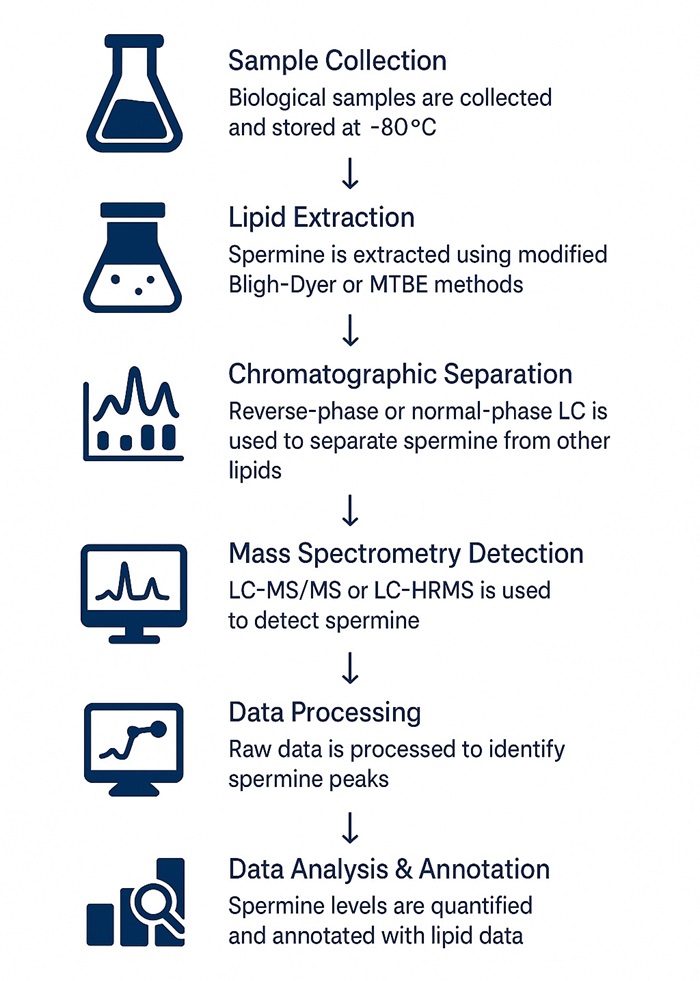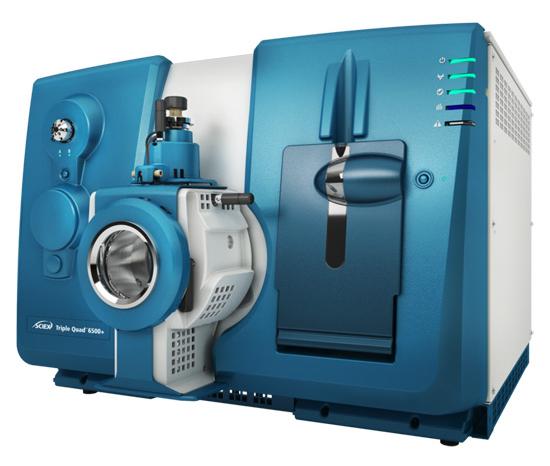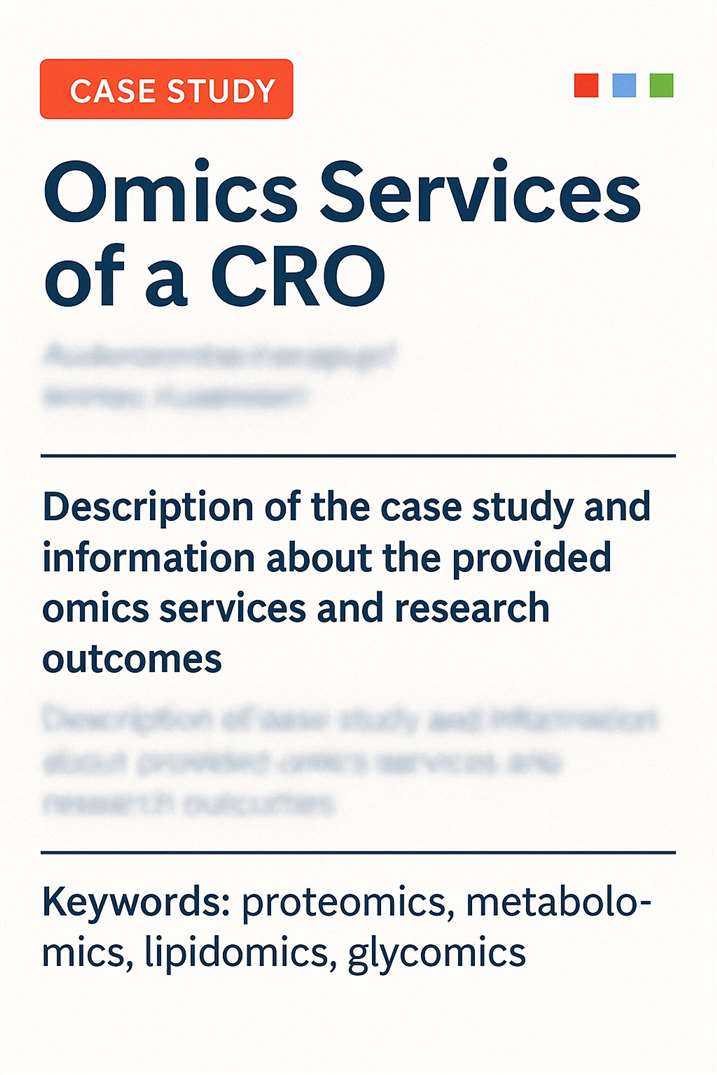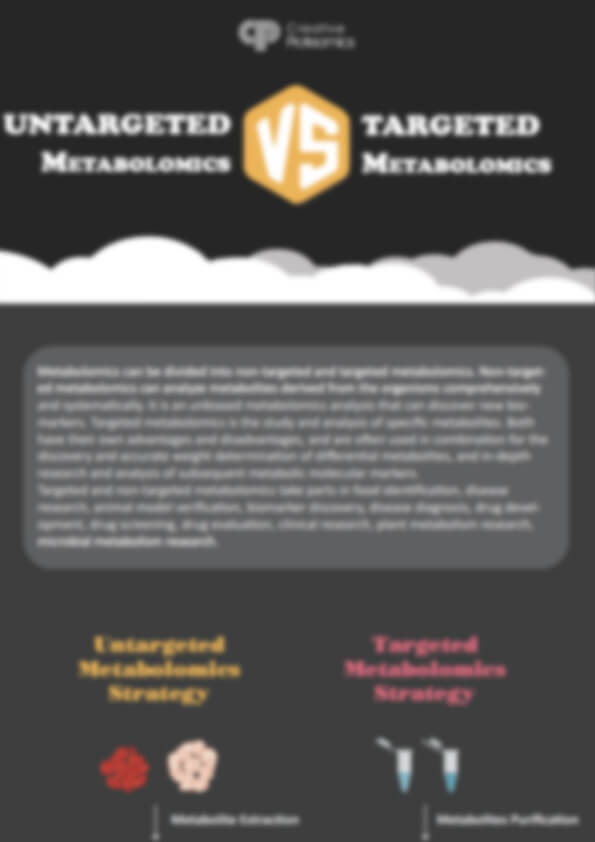Spermine Analysis Service
Creative Proteomics offers precise spermine analysis services, including quantification, polyamine profiling, and metabolic pathway mapping. We help researchers tackle challenges in polyamine metabolism, providing accurate, reproducible data for drug development and biomarker research.
Submit Your Request Now
×- What We Provide
- Advantage
- Workflow
- Technology Platform
- Sample Requirements
- FAQ
- Case Study
- Publications
What is Spermine?
Spermine is a naturally occurring polyamine that plays a critical role in cellular metabolism across virtually all living organisms. Its discovery dates back to 1678 when Antonie van Leeuwenhoek first identified it in human seminal plasma. Later, in 1888, German chemists Ladenburg and Abel introduced the name "spermin." The accurate chemical structure of spermine was finally established in 1926 by Dudley, Rosenheim, Starling, and Wrede.

Spermine exists predominantly as a polycation at physiological pH and is often found associated with nucleic acids. Its primary biological function includes stabilizing the helical structures of nucleic acids, notably in viruses. Furthermore, spermine and its related polyamines, such as spermidine and putrescine, are essential for several biochemical processes. These include the regulation of transcription and translation, modulation of ion channels, and the maintenance of cellular membrane integrity.
In mammals, spermine is synthesized from the precursor ornithine, which is critical for cellular growth. While spermine is abundant in various tissues, its levels are carefully regulated due to its role in essential processes such as cell cycle progression, protection against oxidative damage, and the stabilization of DNA structures.
Creative Proteomics offers targeted metabolomics analysis services to facilitate qualitative and quantitative analysis of spermine. Our services cater to researchers from various fields including molecular biology, biochemistry, and cellular biology, offering precise and reproducible spermine measurements.
Spermine Analysis Service Offered by Creative Proteomics
- Absolute Quantification of Spermine: Accurate LC-MS/MS-based quantification using isotope-labeled internal standards for various biological matrices
- Comprehensive Polyamine Profiling: Simultaneous detection of spermine, spermidine, putrescine, and other related polyamines in a single run.
- Upstream & Downstream Metabolite Detection: Analysis of pathway-related compounds such as SAM, SAH, ornithine, methionine, and acetylated polyamines.
- Metabolic Pathway Mapping & Enrichment: Integrated pathway visualization and enrichment analysis using curated databases (KEGG, MetaCyc).
- High-throughput Batch Sample Analysis: Scalable processing of up to 96 samples per batch, suitable for clinical or drug development studies.
- Bioinformatics & Statistical Reporting: Includes PCA/PLS-DA, fold change analysis, p-values, and pathway impact scores with visualized outputs.
- Multi-Sample Type Compatibility: Validated protocols for plasma, serum, urine, tissue homogenates, cell lysates, and culture media.
- Customized Project Design: Tailored solutions for target expansion, method optimization, or combined omics integration.
List of Detected Spermine and Related Metabolites
| Analyte | Metabolic Pathway | Biological Significance |
|---|---|---|
| Spermine | Polyamine biosynthesis | Stabilizes DNA/RNA, modulates ion channels, supports cell growth |
| Spermidine | Polyamine biosynthesis | Induces autophagy, regulates gene expression |
| Putrescine | Arginine and proline metabolism | Precursor for polyamines, linked to cell proliferation |
| Ornithine | Urea cycle, Polyamine pathway | Precursor to putrescine; ammonia detoxification |
| N¹-Acetylspermine | Polyamine catabolism | Intermediate in spermine degradation |
| N¹-Acetylspermidine | Polyamine catabolism | Marker of increased polyamine turnover |
| S-Adenosylmethionine (SAM) | Methionine cycle, Polyamine synthesis | Methyl group donor, essential for spermine/spermidine synthesis |
| S-Adenosylhomocysteine (SAH) | Methionine metabolism | Byproduct of SAM-dependent methylation |
| Methionine | Amino acid metabolism, methylation cycle | Precursor to SAM and polyamine biosynthesis |
| γ-Aminobutyric Acid (GABA) | Neurotransmitter metabolism, polyamine link | Neuromodulator; influenced by polyamine balance |
| Urea | Urea cycle | Waste product linked to arginine and polyamine metabolism |
| Agmatine | Arginine decarboxylation | Neuromodulator; interacts with polyamine biosynthesis |
| Citrulline | Urea cycle, nitric oxide cycle | Arginine regeneration; involved in nitrogen balance |
Advantages of Spermine Assay
- Exceptional Sensitivity: Limit of Detection (LOD) as low as 0.1 ng/mL for spermine in plasma and urine samples.
- High Quantification Accuracy: Intra-assay and inter-assay variability maintained at<5% RSD (Relative Standard Deviation).
- Wide Dynamic Range: Linear quantification range from 0.1 ng/mL to 10 µg/mL, suitable for both trace-level and abundant samples.
- High Throughput Capacity: Capable of analyzing up to 96 samples/day, ideal for clinical cohorts or drug response profiling.
- Excellent Recovery Rate: Average sample recovery rates between 92%–105%, ensuring reliable quantification across diverse matrices.
- Low Sample Volume Requirement: Requires as little as 50 µL of biological fluid per analysis, preserving precious or limited samples.
- Matrix Flexibility: Fully validated for multiple biological matrices including serum, plasma, urine, tissue homogenates, and cell cultures.
Workflow for Spermine Analysis Service

Technology Platform for Spermine Analysis Service
Primary Platform: LC-MS/MS using Sciex QTRAP 6500+ offers femtomole-level sensitivity and excellent reproducibility.
Chromatographic System: UHPLC system (Agilent 1290 Infinity II) equipped with C18 reversed-phase columns for sharp peak resolution.

SCIEX Triple Quad™ 6500+ (Figure from Sciex)

Agilent 1260 Infinity II HPLC (Fig from Agilent)
Sample Requirements for Spermine Analysis Service
| Sample Type | Minimum Amount Required | Notes |
|---|---|---|
| Plasma/Serum | ≥ 50 µL | Use EDTA or heparin tubes; avoid hemolysis |
| Urine | ≥ 100 µL | First morning void or 24-hour collection preferred |
| Tissue (Animal/Human) | ≥ 20 mg | Snap-frozen or stored at -80°C; avoid repeated freeze–thaw cycles |
| Cell Pellets | ≥ 1 × 10⁶ cells | Washed with PBS; flash frozen or stored in cryotubes |
| Cell Culture Supernatant | ≥ 200 µL | Clarified by centrifugation; serum-free media preferred |
| FFPE Tissue Sections | ≥ 2 slices (10 µm thick) | Requires additional dewaxing; consult for extraction compatibility |
| CSF (Cerebrospinal Fluid) | ≥ 30 µL | Low volume accepted; please inquire for validation |
Applications of Spermine Assay Service
Molecular Biology
Investigating spermine’s role in nucleic acid stabilization and gene regulation.
Cell Biology
Studying cell growth, membrane integrity, and intracellular signaling.
Biochemistry
Exploring spermine’s function in enzymatic activity and metabolic pathways.
Microbiology
Analyzing polyamine involvement in microbial growth and stress response.
Plant Science
Assessing spermine’s impact on plant development and stress tolerance.
Nutritional Science
Monitoring dietary influences on endogenous spermine levels and metabolism.
Demo
FAQ of Spermine Analysis Service
How do I submit my samples and what form must be completed?
Ship samples on dry ice with a completed Sample Submission Form (downloadable from our portal) including project ID, sample IDs, and requested analysis modules.
Can I request a rush analysis or expedited turnaround?
Yes—rush processing (3–5 business days) is available upon request; a nominal surcharge applies.
What quality-control data are included in the final report?
Each batch report includes internal-standard recovery, calibration-curve details (R² values), and replicate precision (RSD%).
How are my data delivered, and in what formats?
You receive a PDF summary, raw chromatograms (mzML), and a spreadsheet (.xlsx) with quantitative results and metadata.
Do you offer data-analysis consultations or interpretation support?
Yes—our bioinformatics team is available for an optional interpretation session to help contextualize results (hourly consulting rate).
What happens if a sample fails QC criteria?
We re-extract and re-run at no extra charge for up to two attempts; if failures persist, we recommend sample recollection.
Are there volume discounts for large-scale projects?
Yes—projects over 500 samples qualify for tiered pricing; please contact sales for a custom quote.
Can I split my batch into multiple reporting milestones?
Absolutely—just indicate your preferred batching scheme; partial reports can be issued as each sub-batch completes.
How do you ensure data confidentiality and sample traceability?
All projects use encrypted IDs, secure LIMS tracking, and GDPR-compliant data storage with access controls.
Is there a minimum project size or sample number requirement?
No strict minimum—single samples are accepted—though batching five or more typically optimizes cost and efficiency.
Can I integrate Spermine analysis with my other omics datasets?
Yes—our export formats and APIs support seamless integration with metabolomics, proteomics, or transcriptomics pipelines.
Learn about other Q&A.
Spermine Analysis Service Case Study

Title: Disruption of CYCLOPHILIN 38 function reveals a photosynthesis-dependent systemic signal controlling lateral root emergence
Journal: bioRxiv
Published: 2020
- Background
- Materials & Methods
- Results
Polyamines, including putrescine, spermidine, and spermine, are vital for numerous biological processes like transcription, translation, cell growth, and aging. These molecules are fully protonated at physiological pH and predominantly associate with RNA and ribosomes to facilitate global protein synthesis. Polyamine regulation occurs through various mechanisms, such as gut absorption, de novo synthesis, and salvage pathways.
In the kidney, which is highly metabolically active, polyamine homeostasis is crucial and its disruption can lead to various diseases. Recent studies have identified altered polyamine metabolism as a common feature in multiple kidney injury models, with polyamines playing diverse roles, from protection to tissue damage. Understanding how polyamine regulation occurs, particularly through mechanisms like AZIN1 A-to-I RNA editing, is essential in defining the timeline and stages of kidney disease. The study of AZIN1 editing offers potential as a molecular clock to track disease progression in both kidney injuries and other conditions.
Malaria Cohort: RNA-seq data (GEO GSE52166) from whole blood samples before and after Plasmodium falciparum infection.
Human Kidney Biopsy: Bulk RNA-seq data from GSE139061 and Kidney Precision Medicine Project Atlas. Tissues processed with SMARTer Stranded Total RNA-Seq Kit v2 and sequenced on NovaSeq.
Animal Models:
- Mice: C57BL/6J and AZIN1-edited mice used for kidney injury studies.
- Procedures: Endotoxin injection and ischemia-reperfusion injury performed.
Cells: HEK293T and AZIN1-edited cells cultured in DMEM with FBS and antibiotics.
dsRNA Analysis:
- UV Crosslinking: Total RNA extracted from mouse kidneys, digested with RNase A and RNase III, and analyzed for dsRNA.
- Immunoprecipitation: dsRNA isolated using anti-dsRNA antibody J2, RNA extracted and sequenced.
A-to-I Editing Analysis: Sequencing data analyzed using reditools2 and edgeR. Sites filtered by editing rate and sample coverage.
Nanopore RNA Sequencing: Direct cDNA sequencing of polyA+ mRNA from mouse kidneys.
AZIN1 Immunoprecipitation and Mass Spectrometry: FLAG-tagged proteins isolated and analyzed by LC-MS/MS.
Polyribosomal Profiling: Tissues and cells subjected to cycloheximide treatment, lysed, and analyzed on sucrose gradients.
- Untargeted Analysis: Performed at Metabolon Inc.
- Targeted Analysis: Includes measurement of spermine using dansyl chloride derivatization and UPLC-MS/MS.
- NAD+ Measurement: HPLC with UV detection.
Seahorse Bioenergetics Assays: Assessed cellular glycolysis and energy metabolism.
Real-time Cell Growth Monitoring: Used IncuCyte for live-cell imaging and growth quantification.
PCR: RNA extraction and reverse transcription followed by conventional PCR.
Western Blotting: Proteins extracted, separated by gel electrophoresis, and analyzed for various markers using specific antibodies.
Polyamine Metabolism Changes
In the endotoxemia model, significant shifts in polyamine metabolism were observed. Early after endotoxin exposure, levels of spermidine and spermine increased, while putrescine levels decreased. This initial increase in polyamines suggests their role in the early inflammatory response. However, beyond 16 hours post-exposure, there was a marked depletion of polyamines, which correlated with decreased expression of key enzymes involved in polyamine synthesis, such as Ornithine Decarboxylase 1. This depletion aligns with the transition to a later stage of sepsis characterized by translation shutdown.
Impact of AZIN1 A-to-I Editing on Metabolism
AZIN1 A-to-I editing was found to influence polyamine metabolism. In CRISPR knock-in cell lines with A-to-I locked AZIN1, cells showed accelerated growth and enhanced metabolic flexibility compared to uneditable cells, especially under stress conditions such as nutrient deprivation. The A-to-I locked state maintained higher polyamine levels and exhibited better growth in response to urea supplementation, indicating a maximized polyamine synthesis.
In Vivo Metabolic Effects
In AZIN1 A-to-I edited mouse models, metabolic analysis revealed increased levels of NAD+ and polyamine-related metabolites, such as S-adenosylmethionine, following ischemia-reperfusion injury. These metabolites are crucial for maintaining cellular functions and metabolic flexibility. Elevated chiro-inositol levels were also observed, which may contribute to resilience against metabolic stress by enhancing glycolytic capacity.
 The Azin1 A-to-I locked state limits kidney injury by upregulating polyamines and other protective pathways. (A) Genome sequencing of different mouse models. (B) Serum creatinine levels after ischemia-reperfusion injury. (C) Polyribosome profiling of kidneys. (D) Hypusine levels in kidney tissue post-injury. (E) Volcano plot of differentially expressed metabolites. (F) Heatmap of differentially expressed metabolites. (G) Pathway enrichment analysis of metabolites. (H) Polyamine metabolite ratios. (I) NAD+ biosynthesis pathway metabolite ratios.
The Azin1 A-to-I locked state limits kidney injury by upregulating polyamines and other protective pathways. (A) Genome sequencing of different mouse models. (B) Serum creatinine levels after ischemia-reperfusion injury. (C) Polyribosome profiling of kidneys. (D) Hypusine levels in kidney tissue post-injury. (E) Volcano plot of differentially expressed metabolites. (F) Heatmap of differentially expressed metabolites. (G) Pathway enrichment analysis of metabolites. (H) Polyamine metabolite ratios. (I) NAD+ biosynthesis pathway metabolite ratios.
Reference
- Xue, Zhiqin, et al. "A high trans-zeatin nucleoside concentration in corms may promote the multileaf growth of Amorphophallus muelleri." Frontiers in Plant Science 13 (2022): 964003. https://doi.org/10.3389/fpls.2022.964003
Publications
Here are some publications in Metabolomics research from our clients:

- High Levels of Oxidative Stress Early after HSCT Are Associated with Later Adverse Outcomes. 2024. https://doi.org/10.1016/j.jtct.2023.12.096
- Function and regulation of a steroidogenic CYP450 enzyme in the mitochondrion of Toxoplasma gondii. 2023. https://doi.org/10.1371/journal.ppat.1011566
- Glycine supplementation can partially restore oxidative stress-associated glutathione deficiency in ageing cats. 2024. https://doi.org/10.1017/S0007114524000370
- A personalized probabilistic approach to ovarian cancer diagnostics. 2024. https://doi.org/10.1016/j.ygyno.2023.12.030
- Enhance trial: effects of NAD3® on hallmarks of aging and clinical endpoints of health in middle aged adults: a subset analysis focused on blood cell NAD+ concentrations and lipid metabolism. 2022. https://doi.org/10.3390/physiologia2010002
References
- Polyamine metabolism impacts T cell dysfunction in the oral mucosa of people living with HIV. 2023. https://doi.org/10.1038/s41467-023-36163-2
- Duan, Lina, et al. Disruption of CYCLOPHILIN 38 function reveals a photosynthesis-dependent systemic signal controlling lateral root emergence. 2020. https://doi.org/10.1101/2020.03.11.985820
- Heruye, Segewkal, et al. Inflammation primes the kidney for recovery by activating AZIN1 A-to-I editing. 2023. https://doi.org/10.1101/2023.11.09.566426














